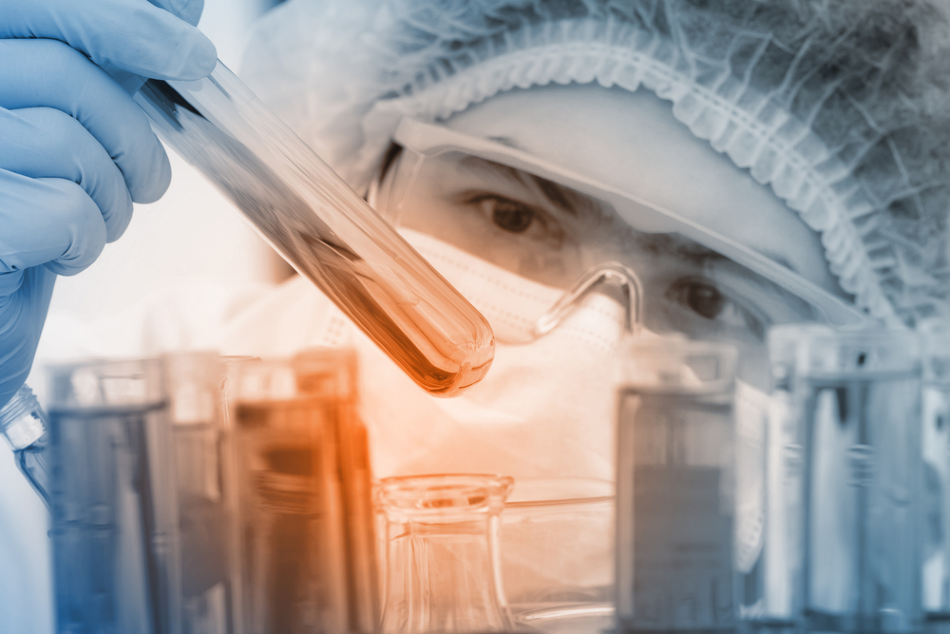
Image Credit:Shutterstock/ SUWIT NGAOKAEW
Gas chromatography-mass spectrometry (GC-MS) is an analytical technique that brings together GC’s separation methods with MS’ abilities to identify and measure different compounds within a sample.
Advances in MS technology means that it can easily be combined with almost all forms of high-speed GC. Low-resolution devices are becoming increasingly popular, but at the same time, high-resolution systems, with all the necessary requirements for high-speed GC analysis, are likely to become widely used in the future. The trend for smaller and faster GC-MS instruments is likely to continue as researchers develop fully automated platforms with user-friendly, ‘intelligent’ software.
GC-MS is used widely in chemical analysis as it can be used to analyze liquid, gaseous and solid samples. It is ideal for studying smaller and volatile molecules such as benzenes, alcohols and aromatics, and simple molecules such as steroids, fatty acids, and hormones.
This article will consider three major applications where GC-MS is used today. These are analysis of cannabis and its components, food and beverages, and environmental materials, such as soils and water.
Thanks to the legalization of medical and recreational cannabis use in several US states, the prevalence of cannabis-containing products has grown dramatically in the past few years. However, while pharmaceuticals require rigorous testing to meet regulations governing quality and safety, this does not apply to cannabis and its related products. As medical uses of cannabis increase, this leaves quality control in the hands of the dispenser, manufacturer, and even the consumer, who require the best analytical methodologies to screen for a variety of factors, such as pesticides and solvents leftover from extraction. This is where GC-MS is proving a valuable tool.
What’s more, analysis can also help determine particular strains of the plant, flavor profiles, and potency, as well as providing information to help prescribe the correct dosage for patients. While the three main cannabis components - tetrahydrocannabinol (THC), cannabidiol (CBD) and cannabinol (CBN) - have attracted significant research and commercial interest, attention is now turning to terpenes, the main component of aromatic oils found in the plant.
GC-MS is widely used in the food industry. It is well-suited to detect and identify contaminants and residues, such as pesticides and pollutants. However, it is equally good at determining levels of additives and colorants, providing food composition data for labels and analyzing taste and aroma. One particular application where GC-MS has proved its worth is in detecting fraud.
With consumers, regulatory bodies and the food industry itself demanding strict monitoring and quality control of food, GC-MS offers efficient and effective analysis. Chromatographic techniques can be used to both detect adulteration and to determine authenticity, while the analytical capability of mass spectrometry can be used to characterize a broad spectrum of components in very complex systems.
Specific applications where GC-MS has proved invaluable include analyzing aroma compounds in wine and tea; determining how certain components influence taste in beer; and studying food and drink products containing cannabis extracts (usually CBD).
GC-MS brings several advantages for studying environmental samples, such as soils, sediments, groundwater, and air. These include high throughput, accuracy, and sensitivity. GC-MS can measure target compounds at very low levels (parts per trillion).
In the environmental industry, GC is the preferred analyzing technique for a variety of pollutants such as mineral oils (MOs), volatile organic compounds (VOCs), organochlorine pesticides (OCPs), endocrine-disrupting chemicals (EDCs) and, polychlorinated biphenyls (PCBs) and polyaromatic hydrocarbons (PAHs). These semi-volatile organic compounds can contaminate soils, air, sediments, and water. Regulations in the US and EU require companies and countries to monitor their presence as they are toxic even at very low concentrations.
MS has become an important analytical technique in a range of sectors because it is fast, highly sensitive and accurate, and provides key structural information. Meanwhile, GC is one of the most important tools in chemistry thanks to its simplicity, sensitivity, and effectiveness in separating components of mixtures. In combination with MS, the techniques offer even greater potential for identifying and measuring compounds in mixtures.
Pittcon

Pittcon will cover MS and GC in great depth. There will be a wide range of exhibitors, symposia, presentations and short courses that will focus on these key analytical techniques. The presentations and exhibits at Pittcon will provide insight into the vital role GC-MS plays in a range of industries. Several market-leading providers of analytical equipment, products and services will be on-site at Pittcon and available to discuss the latest additions to their capabilities. Exhibitors and contributors include Shimadzu, Perkin-Elmer, Restek, Thermo-Fisher Scientific, Advion, Bruker and Waters.
Visit pittcon.org for more information.